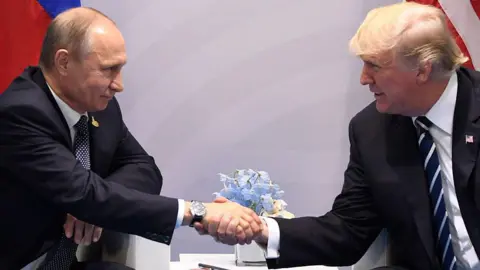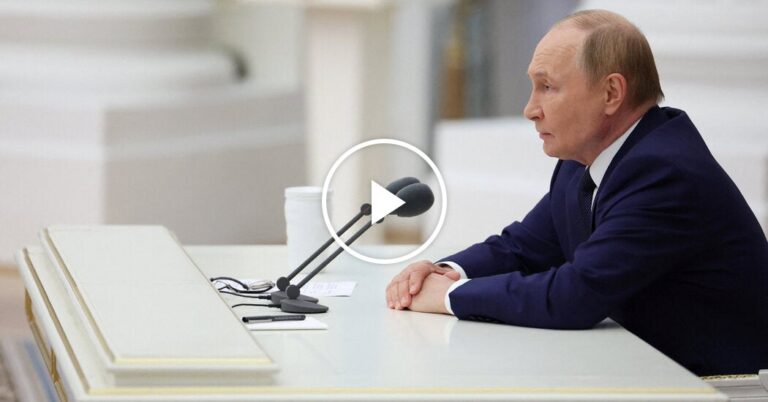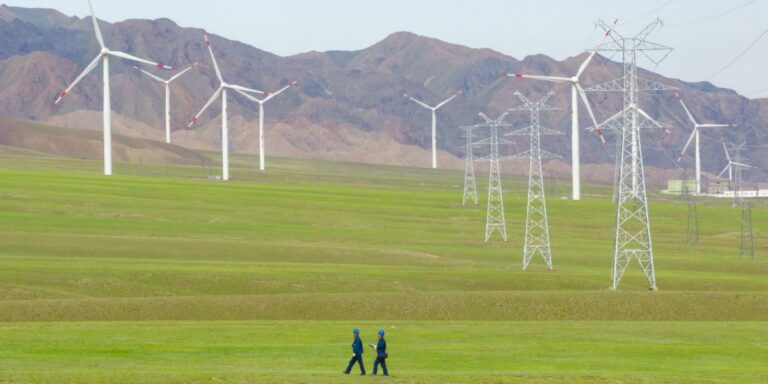Kuala Lumpur, Malaysia – When four Chinese vessels joined with Russian ships earlier this month in joint naval drills in the Sea of Japan, few eyebrows were raised.
Moscow and Beijing have been reinforcing their military partnership in recent years as they seek to counterbalance what they see as the United States-led global order.
But what did raise eyebrows among defence analysts and regional governments had occurred several weeks earlier when China sent its aircraft carriers into the Pacific together for the first time.
Maritime expert and former United States Air Force Colonel Ray Powell described the “simultaneous deployment” of China’s two aircraft carriers east of the Philippines as a “historic” moment as the country races to realise Chinese President Xi Jinping’s ambition of having a world-class navy by 2035.
“No nation except the US has operated dual carrier groups at such distances since [World War II],” said Powell, director of SeaLight, a maritime transparency project of the Gordian Knot Center at Stanford University.
“While it will take years for China’s still-nascent carrier capabilities to approach that of America’s, this wasn’t just a training exercise – it was China demonstrating it can now contest and even deny US access to crucial sea lanes,” Powell told Al Jazeera.
China’s state-run news agency Xinhua described the exercise by the aircraft carriers as a “far-sea combat-oriented training”, and the state-affiliated Global Times reported that China was soon poised to enter the “three-aircraft-carrier era”, when its Fujian carrier enters service later this year.
East Asia is a ‘home game’ for China
China currently has two operational aircraft carriers – the Liaoning and Shandong – and the Fujian is undergoing sea trials.
While the Chinese navy operates the world’s largest naval fleet with more than 370 ships compared with the US’s 251 active ships in commission, Beijing still lacks the global logistics network and advanced nuclear submarine technology required of a truly mature blue water force, Powell said.
Beijing’s three aircraft carriers run on diesel compared with Washington’s 11 carriers, all of which are nuclear powered.
But “gaps” in naval capabilities are closing between the US and China.
“[China] fully intends to close these gaps and is applying tremendous resources toward that end, and with its rapidly improving technical prowess and vastly superior shipbuilding capacity, it has demonstrated its potential to get there,” Powell said.
Beijing’s more immediate focus is not directed towards competing with the US globally, Powell added.
Rather, China is focused on changing the balance of power and convincing its allies and adversaries to accept China’s dominance within its chosen sphere of influence in East Asia.
The second option, if ever necessary, is to defeat them.
“East Asia is a ‘home game’ for China – a place where it can augment its small carrier force through its far larger land-based air and rocket forces – including so-called [aircraft] ‘carrier killer’ missile systems that can strike targets up to 4,000km [2,485 miles] away,” Powell said.
Regionally, while the Philippines engages in increasingly frequent high seas confrontations with the Chinese coastguard, it is Japan that is watching China’s naval build-up with concern, experts said.
Japan’s Defence Minister Gen Nakatani said in June – after confirming that China’s two carriers had operated simultaneously in the Pacific for the first time – that Beijing apparently aims “to advance its operational capability of the distant sea and airspace”.
With the US increasingly perceived as becoming more inward-looking under President Donald Trump, Japan is considered a growing force in the contested maritime terrain in the Asia Pacific region amid what Tokyo has called “the most severe and complex security environment since the end of World War II”.
‘Preparation for a more uncertain future’
Even before Trump’s second stint as US president, Japan had embarked on the most pivotal shift in post-World War II military spending.
Tokyo’s defence spending and related costs are expected to total 9.9 trillion yen (about $67bn) for fiscal year 2025, equivalent to 1.8 percent of Japan’s gross domestic product (GDP), and the government has committed to raising spending on defence to 2 percent of GDP by 2027, according to Japanese media reports.
“[Japan’s] naval capacity is growing steadily, not just in support of the US alliance but in quiet preparation for a more uncertain future – perhaps even one in which America withdraws from the Pacific,” said Mike Burke, lecturer at Tokyo-based Meiji University.
Collin Koh, senior fellow at the Singapore-based Institute of Defence and Strategic Studies (IDSS), also said that China’s growing military might, assertiveness and proclivity to resort to coercive behaviour have “aggravated Japan’s threat perception”.
But Japan alone cannot guarantee security in such a regional hotspot as the South China Sea, said Burke.
Instead, Tokyo’s goal is to check Beijing’s growing power through a Japanese presence and building partnerships with other regional players.
This year alone so far, Japan has deployed two naval fleets to “realise” what Japanese officials describe as a free and open Asia Pacific region. The first fleet was deployed from January 4 to May 10 and docked in 12 countries, including Malaysia, Singapore, the Philippines, Saudi Arabia, Bahrain and Oman.
The second was deployed on April 21 and is ongoing until November, with port calls in some 23 countries, as well as roles in multilateral military exercises.
Japan aims to build trust with other allies, Burke said, noting that Japan has worked on its soft power by funding radar systems, investing in civil infrastructure from ports to rail networks in Southeast Asia, and supporting maritime domain awareness initiatives in the region.
Noriyuki Shikata, Japan’s ambassador to Malaysia, described Tokyo’s approach as a strength at home and reinforcing collaboration abroad with “like-minded countries and others with whom Japan cooperates”, in order to uphold and realise a free and open international order.
“Japan has been strengthening its defence capabilities to the point at which Japan can take the primary responsibility for dealing with invasions against Japan, and disrupt and defeat such threats while obtaining the support of its [US] ally and other security partners,” the ambassador told Al Jazeera.
Zachary Abuza, professor of Southeast Asia studies and security at Washington, DC-based National War College, said the Japan Maritime Self-Defence Force (JMSDF) is a world-class navy that is focused on building the highest level of capabilities.
Abuza also described Japan’s submarine force as “exceptional”, while it is also building up its capabilities, including more high-end antiship missiles.
“All of these developments should give the Chinese some pause,” Abuza told Al Jazeera in a recent interview.
“That said, they [the Japanese] are nervous about Trump’s commitment to treaty obligations, and you can see the Japan Self-Defence Force is trying to strengthen its strategic autonomy,” he said.
‘Chinese assertiveness could result in an accident’
Geng Shuang, charge d’affaires of China’s permanent mission to the United Nations, said earlier this year that China was committed to working with the “countries concerned” to address conflicting claims in the South China Sea through peaceful dialogue.
He also lambasted the threat posed by the US navy’s freedom of navigation operations in the contested sea.
“The United States, under the banner of freedom of navigation, has frequently sent its military vessels to the South China Sea to flex its muscles and openly stir up confrontation between regional countries,” Geng was quoted as saying by Xinhua.
China claims almost all of the South China Sea, a vast area spanning approximately 3.6 million square kilometres (1.38 million square miles) that is rich in hydrocarbons and one of the world’s major shipping routes.
Vietnam, the Philippines, Taiwan, Malaysia and Brunei are claimants to various parts of the sea.
Ralph Cossa, chairman of the Honolulu-based Pacific Forum research institute, said “the challenge to freedom of navigation is a global one”.
But the challenges posed are particularly worrying when it comes to the rival superpowers China and the US.
“I don’t think anyone wants a direct conflict or is looking to start a fight,” Cossa said.
“But I worry that Chinese assertiveness could result in an accident that it would prove difficult for either side to walk away or back down from,” Cossa said.
Speaking on the sidelines of the Institute of Strategic and International Studies’ Asia Pacific Roundtable 2025 summit in Kuala Lumpur earlier this year, Do Thanh Hai, deputy director-general at Vietnam’s East Sea Institute Diplomatic Academy, said no one will emerge unscathed from an incident in the disputed region.
“Any disruption in the South China Sea will affect all,” he told Al Jazeera.












